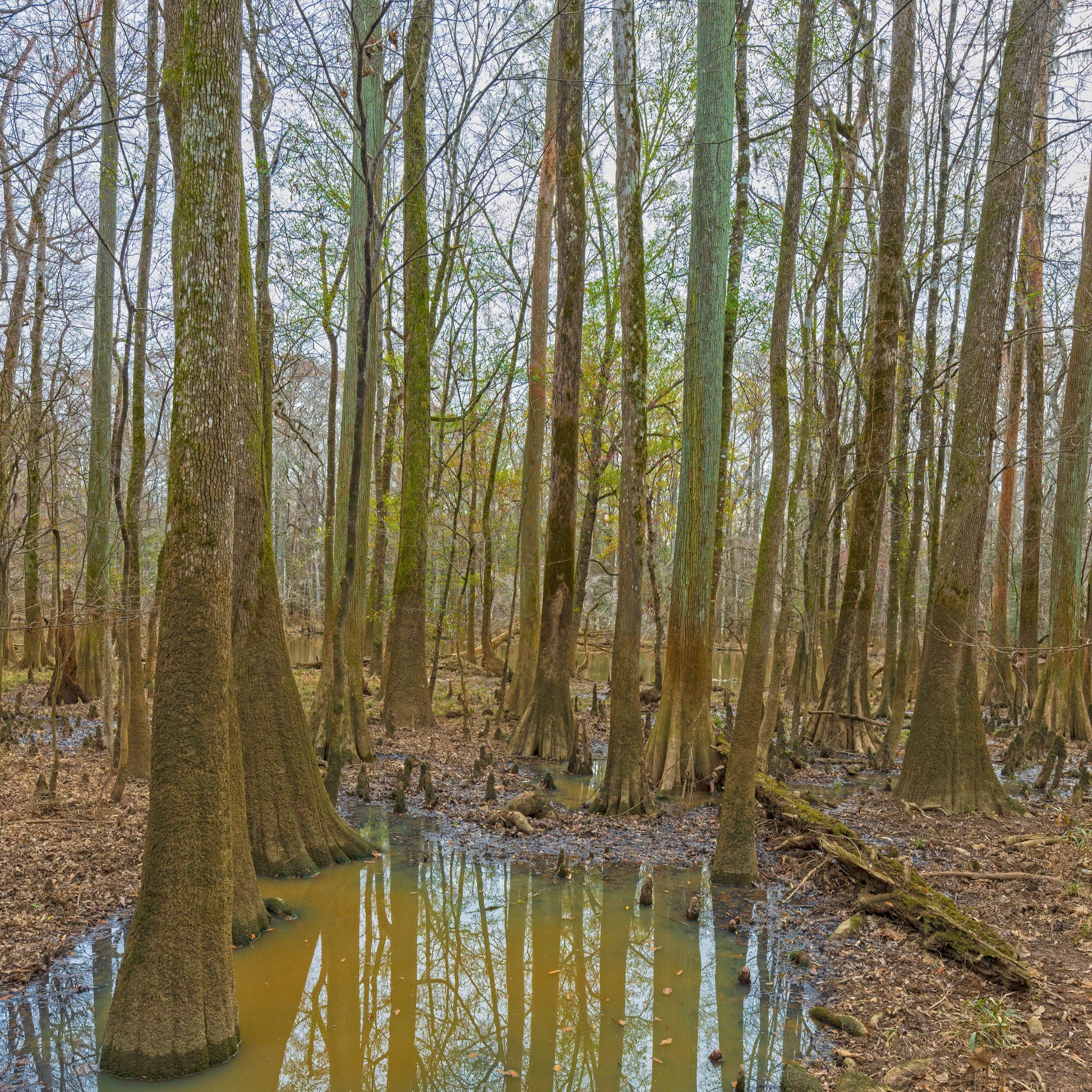Limited Quantities - Reserve Now For Fall
Swamp Tupelo Tree
Swamp Tupelo Tree
Couldn't load pickup availability
Nyssa biflora
Swamp Tupelo Tree
The Swamp Tupelo Tree is a wetland-loving native species known for its glossy foliage, brilliant red fall color, and ability to thrive in consistently saturated soils. Often found in bottomlands and coastal plains, this tree is a keystone species for wildlife and water-based ecosystems.
Ideal for flood-prone areas, rain gardens, and wetland restorations, the Swamp Tupelo delivers seasonal beauty, shade, and critical habitat while tolerating standing water better than most trees in North America.
Swamp Tupelo Tree Overview
| Attribute | Details |
|---|---|
| 🌿 Botanical Name | Nyssa biflora |
| 🏷️ Common Names | Swamp Tupelo, Swamp Black Gum, Swamp Gum |
| 🌳 Mature Height | 40–60 feet |
| 🌐 Mature Width | 20–30 feet |
| 📈 Growth Rate | Slow to moderate (8–18 inches per year) |
| ⏳ Lifespan | 100–300+ years |
| 🧊 USDA Zones | 6–9 |
| ❄️ Chill Hours | 500–800 hours |
| ☀️ Sun Preference | Full sun to partial shade (best color in full sun) |
| 🧱 Soil Type | Acidic, poorly drained, clay or muck soils |
| ⚖️ Soil pH | Strongly to slightly acidic (4.5–6.5) |
| 💧 Water Needs | High; thrives in saturated or seasonally flooded conditions |
| 🍁 Foliage Color | Glossy green in summer; vivid scarlet to wine red in fall |
| 🌸 Flower Color | Inconspicuous greenish-white; spring blooming |
| 🐝 Pollination | Attracts bees and supports native wildlife pollinators |
| 🌿 Growth Habit | Upright, oval canopy with often flared base |
| ↔️ Spacing | 20–30 ft apart for restoration or landscape planting |
| 🏡 Landscape Uses | Wetland gardens, floodplain buffers, habitat restoration |
| 🧹 Maintenance Level | Low once established |
Environmental Benefits
🌱 Thrives in seasonally flooded and waterlogged sites
🪶 Provides critical food and cover for birds, fish, amphibians, and mammals
🍁 Displays intense fall color for visual and ecological impact
🌧️ Excellent for stormwater retention and watershed health
Pros & Cons
| ✅ Pros | ⚠️ Cons |
|---|---|
| 💧 Tolerates flooding and saturated soils better than most trees | 🐢 Slow growth rate compared to upland species |
| 🍁 Spectacular red foliage in fall | ⚠️ Requires acidic soil; may struggle in alkaline conditions |
| 🪶 Supports wetland wildlife and biodiversity | ✂️ Pruning may be needed in urban settings to lift canopy |
| 🧬 Long-lived native tree with high ecological value | 🪵 May not thrive in dry or upland landscapes without irrigation |
| 🌳 Ideal for restoration and naturalized landscapes | 🌱 Not suited for compact planting sites or areas with poor drainage |
Planting & Care Guide
🛁 Soak or thoroughly water before planting; keep root zone moist
🕳️ Dig a hole twice the width of the root mass; plant at original depth
🌾 Mulch 2–4 inches deep to retain moisture and suppress weeds
💦 Water regularly during the first few years; thrives in wet soils
✂️ Prune in late winter to remove crossing branches or raise canopy
🧪 Fertilize in early spring only if soil is nutrient-deficient
The Swamp Tupelo Tree is a resilient wetland native that brings fall brilliance, water tolerance, and wildlife value to landscapes where few trees can thrive. Whether you're planting for stormwater control, habitat support, or natural beauty, this species offers longevity, ecological impact, and Southern charm.
Share


